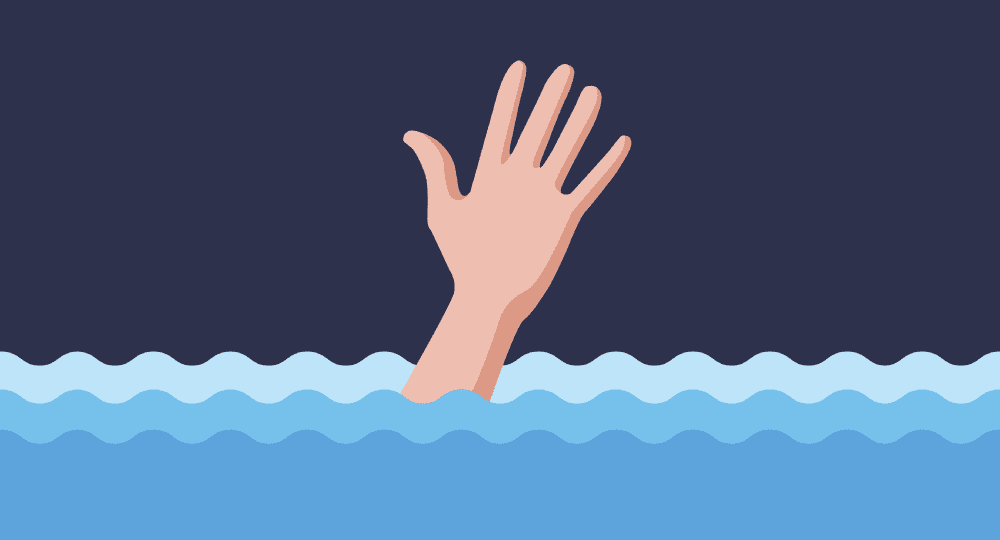As a mother of school-aged children who love to spend time outside, information about drowning prevention piques my interest each summer. Earlier this spring, I read an article about the dangers of children wearing blue, or water-colored, bathing suits. I realized I had just purchased my 8-year-old son a blue bathing suit – it is one of my favorite colors on him! The article highlighted how certain blue bathing suits blend in with water and make it difficult to see the child underwater. I exchanged that blue bathing suit for a bright orange color and decided to do a little more research into water safety for the summer.
According to the American Academy of Pediatrics, “drowning is the leading cause of unintentional injury related death in US children ages 1-4 and the third leading cause of unintentional injury related death in children and teens ages 5-19.” Most of these are preventable deaths and happen in the blink of an eye. Male toddlers and teenage boys are at the highest risk of drowning, making up for 75% of these deaths. Drowning is quick and silent, contrary to how it is often portrayed on television where you see the victim splashing their arms and yelling for help. A recent study by the AAP showed that 70% of drowning deaths occur from May to August and around half of these happened between the hours of 4pm and 6pm. These evening hours coincide with busy swim times and times where the caregiver may be distracted with prepping dinner.
While most child and teenage deaths occur in pools, lakes, rivers, and other bodies of water, infants most often drown in a bathtub or bucket of water. Many times the caregiver will leave the infant for just a couple of minutes to grab something or attend to another child, thinking that the infant bath seat will keep them out of the water. Unfortunately, these infant seats are not designed to refrain the child from rolling out and these babies can drown in just a few inches of water.
Through my research, I have learned that prevention is the main goal of water safety. No single layer is enough – prevention and protection require multiple layers. First and foremost, the AAP recommends starting swimming lessons at age 1! There are many organizations that offer swimming lessons to children, and it is important to choose a reputable company. Make sure that the lessons focus on water survival competency skills. The two main goals should be for the child to learn how to get back to the surface from under the water and second, for the child to learn to propel themselves 25 yards in the water. The swim instructors should be experienced and qualified with CPR certification. Finally, the organization should never advertise that they can provide your child with “quick lessons.” Proper programs require multiple sessions. If cost is a concern, city governments often have programs in place that help pay for the lessons.
Other layers of protection to decrease the risk of drowning in children include close, constant, and capable adult supervision. It is helpful to assign one person to oversee the pool at a time and this person should be free from distraction and alcohol. Every residential pool should have at least a 4 ft fence around it with gates that are not easily accessible to children. A newer option for pools is something called a “pool alarm.” Because drowning is often silent and happens so quickly, a pool alarm detects waves on the water’s surface and sounds off a loud noise. This helps the wandering child who may accidentally end up by a pool unattended.
Through research that started over the blue bathing suit, I learned that July 25 is now recognized as World Drowning Prevention Day. This event was declared in April of 2021 by the United Nations General Assembly. This global event seeks to increase knowledge in and around the water while also remembering the lives lost to drowning. Cities around the world illuminate landmarks in blue light to show their support for this event. With research and education on prevention and events like World Drowning Prevention Day, there is hope to decrease the number of drowning events- especially among children.
—
Resources:
American Academy of Pediatrics. (2021, July 9). Child Drownings: AAP Finds Layers of Protection Key to Prevent Tragedies. Child Drownings: AAP Finds Layers of Protection Key to Prevent Tragedies – HealthyChildren.org
American Academy of Pediatrics. (2023) Swim Lessons: When to Start & What Parents Should Know. Swim Lessons: When to Start & What Parents Should Know – HealthyChildren.org
World Health Organization. (May, 2023) World Drowning Prevention Day 2023. World Drowning Prevention Day 2023 (who.int)
Yu, Yi- Jin. (2023, April 20). Swim instructor warns parents against blue bathing suits for kids. ABC News. Blue bathing suit toddler warning: Swim instructor warns parents against blue swimsuits for kids – ABC7 New York (abc7ny.com)





